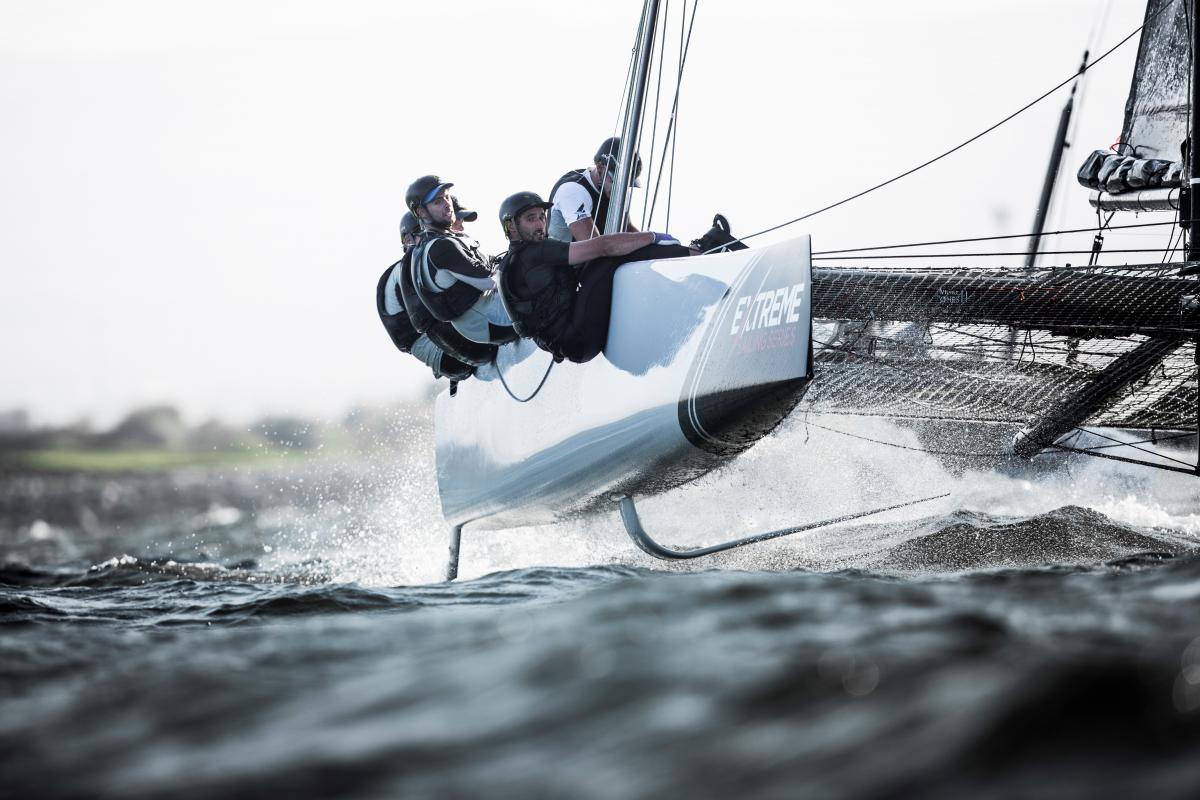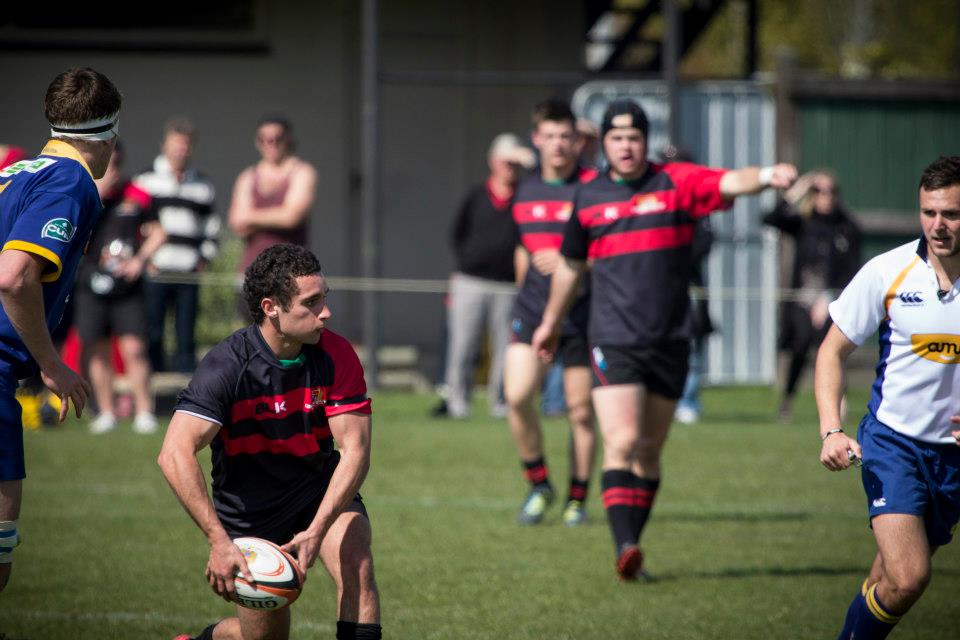Luca Brown likens his job to trying to get things done on top of an airborne plane.

(Luca Brown (in black) was part of the NZL Sailing Team who recently competed in the Extreme Saqiling Series in Oman. Photo: Lloyd Images)
He's not a stuntman, although some might categorise him as being in a similar role, given the dangers and small margins for error and the safety gear he routinely wears.
Welcome to the world of sailing, in the case of the 23-year-old Brown, Youth America's Cup sailing, where speed is king on foiling catamarans.
"When you're getting the boat going on the foils, it's like that feeling when a plane finally lifts off the runway," he says. "It goes quiet and smooth for a moment, then you start speeding up exponentially and you're trying to manoeuvre around the boat with g-forces pushing you around."
Brown is a member of the eight-strong NZ Sailing Team who will go to Bermuda in June to defend the Red Bull Youth America's Cup for sailors aged 18-24.
In 2013, that team who won in San Francisco contained some of the brightest talents in New Zealand sailing in Peter Burling, Blair Tuke, Sam Meech, Josh Junior, Jason Saunders, Andy Maloney, Jono Spurdle and Guy Endean. Five have gone on to graduate to Emirates Team New Zealand, and it's a place Brown and his teammates want to get to.
It wasn't a destination Brown had initially dreamed of reaching.
He had been a talented youth sailor, competing in the Optimist world championships in Uruguay as a 13-year-old, but also showed promise in rugby.
He made representative North Harbour teams and the Blues wider development squad before relocating to Christchurch in 2011 to complete an engineering degree and turning out for the Canterbury under-18 and under-20 sides. On top of that, he was also part of the wider Canterbury academy that feeds into the Crusaders.

(Luca Brown playing for Canterbury under-20s. Photo: Matt Neary)
He was starting halfback for the Canterbury under-20 side which won the national title and saw a number of his teammates being offered Super Rugby and ITM Cup contracts.
"I gave it everything, particularly in the age-group stuff, and was my whole focus for a while," he says. "But that rugby environment is probably the most competitive in the country, if not the world. I was hoping to get a contract but it didn't come through.
"It's one of those sports where you have one chance to crack it and I gave it everything but I was struggling physically. My size counted against me and I was getting injuries – one thing led to the other. I was getting beaten up a little bit."
These days he's still being beaten up, just without all the bruising and big hits.
Sailing has evolved enormously over the past five years with the advent of foiling, which is when a boat is lifted out of the water to sit on its foils to reduce the wetted area or drag. Often a boat which weighs more than 1300kg is supported by a foil little more than the size of a bookcase shelf, and they can go twice as fast as wind speed.
It's a world Brown hoped he might get into after leaving university and parking his rugby ambitions and he believes his rugby background has been invaluable.
"It's not just the strength and conditioning element, but also the discipline around training, nutrition and all the other things you need to make it as a professional," he says. "I was more aerobically blown out after the first race series [on a foiling catamaran] but less bruised. You have to get stuck in and, like rugby, keep a clear mind as the level of intensity rises.
"The consequences in yachting are a lot higher. You might drop the ball in rugby and it will be a scrum. If you stuff up in sailing, then people can get hurt or killed."
Oracle grinder Graeme Spence had a lucky escape recently when he was thrown into the water between the two hulls and narrowly missed being sliced by one of the four sharp edges of the foils and rudders.
Brown, who is the bowman on the boat, and his teammates head to Bermuda on Saturday for a two-week training block when they get their hands on the AC45s they will use for the Red Bull Youth America's Cup. They are the same boats used for the America's Cup World Series but have been modified to foil more easily and can travel at speeds up to 40 knots (75kmh).
They are only five feet shorter than the boats being used in the America's Cup and very challenging to race.
"It will be a test for us physically," Brown says. "The Team New Zealand guys have said it goes up another 100 percent from what we are training on now. And that has been a big step up for us.
"But that's part of the reason why we have been working so hard lately. We might be going to a beautiful part of the world to sail in Bermuda, but that doesn't matter when you have your head down grinding away to make the boat go as fast as you can.
"The physical aspect is something I think a lot of guys in rugby would be interested in doing because you don't just sit on the side of a boat anymore."
As Brown would attest, it's more like a plane.
# The NZ Sailing Team are still short of the $200,000 they need to get to Bermuda in June. To help them on their mission to defend the Red Bull Youth America's Cup, donate here



